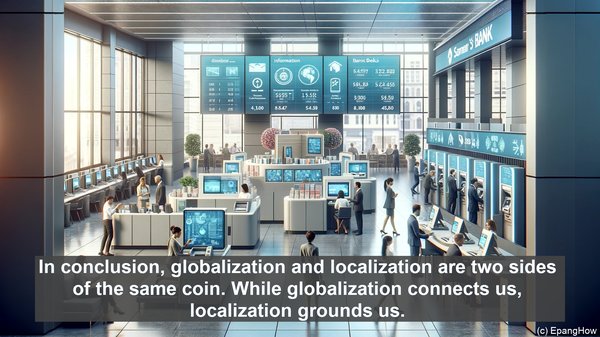Introduction: The Global Village
Hello everyone, and welcome to our article on the fascinating topic of globalization and localization. In today’s world, where distances are bridged by technology and communication, these two concepts play a crucial role in shaping our experiences and interactions. But what exactly do they mean, and how do they differ? Let’s find out.
Defining Globalization: The World as One
Globalization, in its essence, refers to the process of integration and interdependence among nations, organizations, and individuals. It’s the idea that we are all part of a global community, where the actions and decisions made in one corner of the world can have far-reaching consequences elsewhere. From trade and finance to culture and technology, globalization has transformed the way we live and work, breaking down barriers and creating a sense of interconnectedness.

The Pillars of Globalization: Trade and Communication
At the heart of globalization are two key pillars: trade and communication. Trade, in the form of imports and exports, allows goods and services to flow freely across borders, enabling economic growth and specialization. Communication, on the other hand, ensures that ideas, information, and knowledge are shared, fostering innovation and collaboration. Together, these pillars create a global marketplace, where opportunities abound and competition is fierce.
The Benefits of Globalization: A World of Possibilities
Globalization has brought with it a myriad of benefits. For businesses, it means access to new markets, a larger customer base, and the ability to tap into global talent. For individuals, it offers the opportunity to travel, experience different cultures, and learn from diverse perspectives. Economically, it has led to increased prosperity, with countries benefiting from the exchange of goods and services. And in the realm of knowledge and innovation, globalization has been a catalyst, driving scientific advancements and technological breakthroughs.
The Challenges of Globalization: Striking a Balance
While the benefits of globalization are undeniable, it’s not without its challenges. One of the key concerns is the issue of inequality. As wealth and resources flow across borders, there is a risk of certain regions or groups being left behind, leading to social and economic disparities. Additionally, globalization can also result in a loss of cultural diversity, as the dominant global trends and practices overshadow local traditions. It’s a delicate balancing act, and one that requires careful consideration and policy-making.
Understanding Localization: Embracing the Local
In contrast to globalization, localization is about tailoring products, services, and experiences to the specific needs and preferences of a local market. It’s the recognition that while the world may be interconnected, there are unique cultural, linguistic, and social nuances that must be taken into account. Localization goes beyond mere translation; it’s about adapting and customizing, ensuring that a product or service feels native to the target audience.
The Importance of Localization: Connecting on a Deeper Level
Localization is not just about language; it’s about understanding and resonating with the local culture. By investing in localization, businesses can build trust and credibility, as they demonstrate a commitment to the local community. It also enhances the user experience, making a product or service more intuitive and user-friendly. From a marketing perspective, localization can make or break a campaign, as messages that are culturally sensitive and relevant are more likely to resonate.

The Challenges of Localization: Navigating the Complexities
While localization is essential, it’s not without its challenges. One of the primary obstacles is the need for in-depth cultural knowledge. What may be acceptable or effective in one culture may not be in another. Additionally, there are logistical challenges, such as managing multiple language versions or adapting to local regulations. It requires a dedicated team with expertise in both the target market and the product or service being localized.
The Future: A Blend of Global and Local
In today’s globalized world, the lines between globalization and localization are becoming increasingly blurred. It’s no longer a question of either/or, but rather a need for a balanced approach. Businesses and organizations must think globally, leveraging the opportunities that come with an interconnected world. At the same time, they must also be mindful of the local, ensuring that their offerings are relevant and meaningful. It’s a dynamic landscape, one that requires constant adaptation and a deep understanding of the ever-evolving global-local dynamics.
